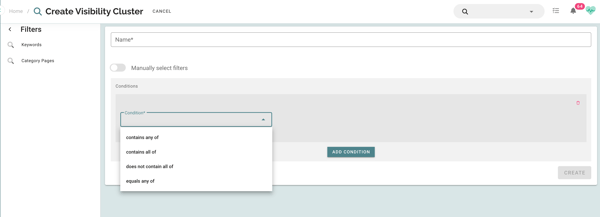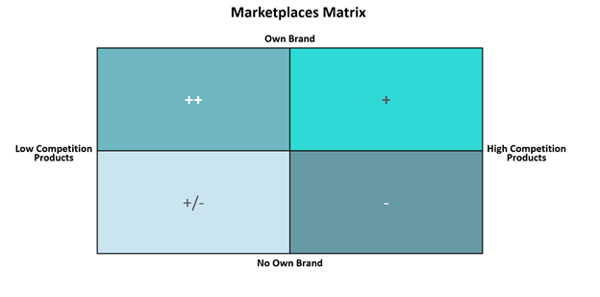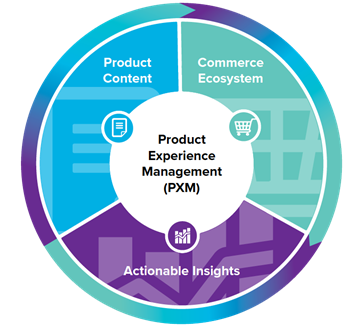This blog will look at 4 challenges you face as a brand selling on marketplaces. Also, we uncover strategies that can help improve your brand on the digital marketplace shelf and your (potential) customer's point-of-sales experience.
1. Staying Ahead of the Competition & Protect your Brand
More than half (55%) of purchases are made online in countries where Amazon is active. The graphic below shows the online purchasing behavior per category in the Netherlands (blue) versus countries where Amazon is active (orange). It is expected that especially the toys, electronics and furniture stores will get much competition from online shopping.

It is good to scan competition in all marketplaces, especially within your product category, before selling your products on a marketplace. Analyze which competitors are active on Marketplaces and whether your brand and products are already being sold. It may even be the case that you compete with your own retailers who also like to sell your brand/products via a marketplace. If you do not properly cover these risks, these can have major consequences for your brand and sales.

As you can see in the above matrix, marketplaces offer enormous possibilities for brand owners. For a reseller without their own brand, things get complicated, but there are also opportunities.
Check how these (potential) competitors present their products, at what price points, and who is 'winning' the buy box. Or, for example, find out if there are videos of the competing products for your main keywords on a marketplace.
Protect your Brand from Unauthorized Sellers
Unauthorized marketplace sellers sell products without brand approval, often below retail prices, damaging brand values. Learn how to stop them in these 5 steps.
2. Optimizing Product Content on Marketplaces
Customers nowadays have so many choices, so displaying relevant product data is more critical than ever. Product detail pages (PDPs) account for a quarter of all eCommerce landing pages.
Most brands leverage their own sales channels and multiple indirect eCommerce channels, including marketplaces. With more than 2 in every 3 consumers heading to marketplaces to search for products, on-page optimization should be done at scale, with content for all the items on all channels optimized and standardized across (international) markets, to guide customers to your products.
By selling your products via a marketplace, you lose a part of customer contact and customer data. Therefore, giving your (potential) buyers a unique product experience outside the platform isn't easy. This means your product pages are increasingly becoming the first and most important touchpoints. Therefore, it is important to continuously track and improve the completeness of your product content on marketplaces.
Make sure your content meets the platform's best practices and avoid too much manual work to optimize this. Optimizing your product content on marketplaces can be very time-consuming.

Product Experience Management (PXM)
Product Experience Management (PXM) has become an important term in the product data landscape. PXM is about having a great experience from beginning to end. From discovery phase to purchase, giving shoppers clear, consistent product information and expectations.
PXM ensures a less high return percentage. Half of the product returns are caused by a difference between the expectation of a product after an online purchase and the received product. The cause is a lack of product information or incorrect product information.
Available product descriptions for every channel in every language help contribute to SEO and increase your products' findability. A PIM system helps you raise the right expectations among users and then fulfill them, which in turn contributes to your PXM.
Finally, with PXM, you can strengthen brand loyalty among your customers. When customers have a positive experience, they are more likely to change into repeat customers, write positive reviews and recommend your products to their friends.
Improve with Content Scorecards
SiteLucent can measure your current status and benchmark competitors, help you optimize, and make continuous marginal improvements with the Digital Content Completeness Score (DCC score).
3. Get on Top of Marketplaces Search Results
Dutch online shoppers currently prefer marketplaces (61%) over search engines such as Google (53%) when looking for products. You must optimize product listings for the platform's search engine. Optimizing your content with the right keywords is essential.
Can shoppers find your products on a marketplace? Using keyword searches or category browsing on marketplaces, customers will often buy a product that ranks high in the search results. Monitoring and improving your products' ranking on the marketplace's search engine can benefit sales significantly.
4. Stable & Competitive Marketplaces Prices
It's good to think carefully about which pricing strategy you will use, especially now that the competition is getting bigger and bigger. Gaining insights into how your pricing stacks up to the competition is vital. A daily-updated overview of competing sellers on marketplaces, including who won the buy box and sold your products at a discount.

Deciding how to react to it isn't very easy. There is no single pricing strategy that works for all products and all marketplaces because you should consider many factors.
You can follow your competitor's prices, choose to extract more margin on fast-selling products, or lower prices when sales are slow. Another strategy for competitive pricing is bundling products into single-SKU offerings, which is at the same time a method to differentiate from the competition.
Also, consider the commission for the sale of products. Amazon's fees range from 6% to 45% based on the category of the product. Brands and producers have an advantage because fees are often lower than traditional sales and marketing channels.